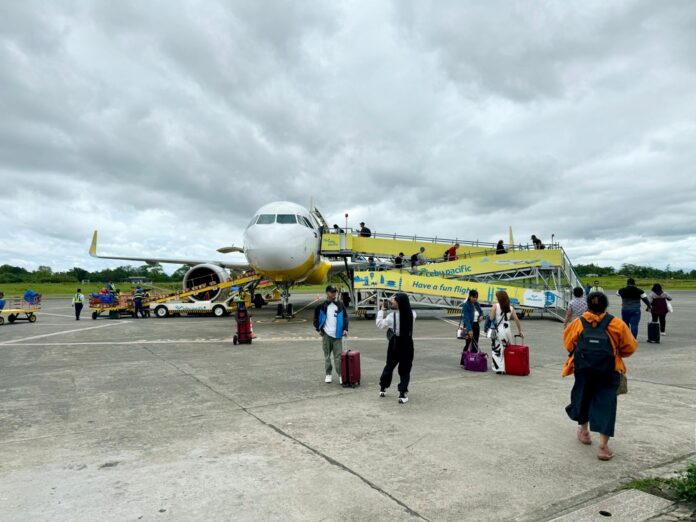Cebu Pacific (PSE: CEB) reported a modest increase in passenger traffic for July 2025, traditionally a low-demand period for the airline sector, highlighting the Gokongwei-led carrier’s resilience amid shifting travel patterns and seasonal headwinds.
The budget airline carried 2.1 million passengers in July, marking a 0.3 percent year-on-year increase, despite a historically lean travel month. While total seat capacity rose 4 percent, the airline’s seat load factor (SLF) — a key efficiency metric indicating how full flights are — declined to 85.6 percent, from 88.8 percent in July 2024.
The real momentum came from international operations, which saw a 4.6 percent increase to 531,000 passengers, underscoring growing demand for regional travel. This helped offset a 1.1 percent dip in domestic passenger traffic, which fell to 1.58 million, despite a slight 0.5 percent capacity increase. International SLF, however, dropped notably to 76.2 percent, down from 83.2 percentthe previous year.
Cebu Pacific President and chief commercial officer Xander Lao attributed the July performance to broader seasonal trends and the shift in the academic calendar.
“Seasonality remains a key factor in the airline industry. While the earlier start of the academic year has brought forward the lean period this July, passenger traffic has stayed resilient,” Lao said in a statement.
Lao added that the airline is entering the third quarter with a strategic focus on capacity discipline.
“Growth will naturally moderate to align with seasonal demand and manage capacity. This deliberate approach allows us to maintain fleet flexibility and positions us to capture the higher demand and growth we expect in the fourth quarter,” he added.
Year-to-date figures underscore Cebu Pacific’s broader recovery trajectory: Passenger volume surged 17.6 percent to 16 million from January to July 2025, up from 13.6 million a year earlier. Of that, domestic travel accounted for 11.9 million passengers (+17 percent), while international volumes rose 19.6 percent to 4.1 million. Overall SLF averaged 85.4 percent, with capacity increasing 18.2 percent to 18.8 million seats.
Cebu Pacific, which pioneered low-cost air travel in the Philippines in 1996, now operates a 100-strong aircraft fleet, serving 37 domestic and 26 international destinations. Since inception, it has flown over 250 million passengers, solidifying its role as a key player in the region’s aviation landscape.







